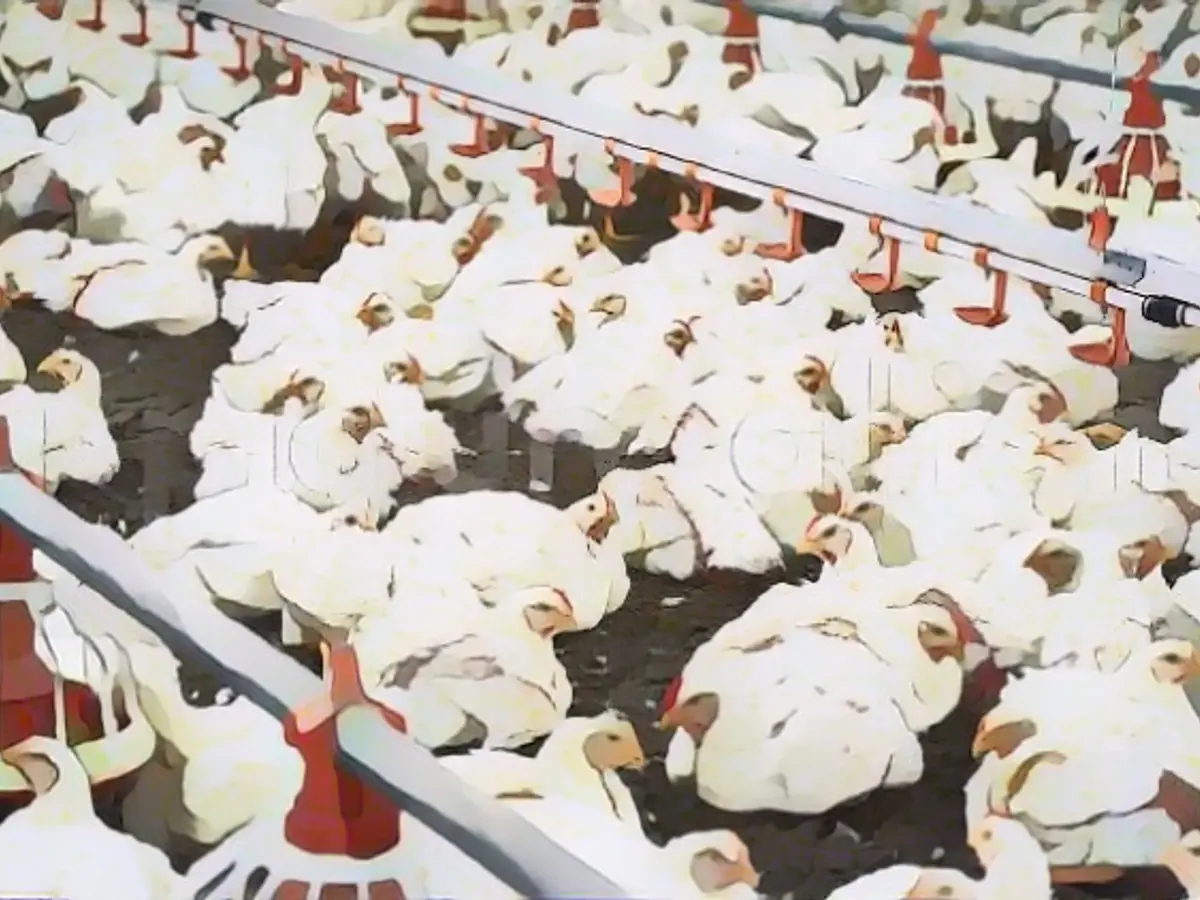How factory farming made a virus dangerous
From a harmless infection in chickens to a deadly pathogen: researchers are investigating how the highly contagious Marek's disease virus has evolved genetically over 1000 years. The results show that factory farming and vaccinations produce killer viruses.
The causative agent of a common and globally widespread viral disease in chickens only acquired its devastating effect with factory farming in the middle of the 20th century. This is the conclusion drawn by an international research team in the journal "Science " from genetic analyses of up to 1000-year-old remains of the Marek's disease virus. According to the study, the environment generally has a decisive influence on the spread of pathogens as well as on their virulence - i.e. on the severity of the diseases they cause.
The highly contagious Marek's disease is a disease of chickens caused by the virus of the same name, which was first described in Hungary in 1907. At that time, it was considered a relatively harmless infection that only caused symptoms in older chickens. In the meantime, the Marek's disease virus (MDV) frequently causes malignant tumors of the lymphatic system in chickens. According to the authors of a recent study, combating the disease, which is notifiable in Germany, for example through vaccinations, costs the poultry industry more than one billion euros per year worldwide.
Factory farming as a mutation driver
In previous centuries, aggressive variants in small and locally isolated chicken populations tended to cause their own extinction. In dense populations in factory farming, on the other hand, they could spread more and accumulate mutations with the rapid succession of transmissions, explains Sebastian Duchene from the Pasteur Institute in Paris in a "Science" commentary. Mass livestock farming not only increases the number of new mutations, but also facilitates the spread of particularly aggressive variants of the virus.
This applies, for example, to strains with the carcinogenic gene Meq. In the study, the research team led by Steven Fiddaman from the University of Oxford recreated old and modern forms of this gene and tested them in cell cultures. The result: in contrast to the new variants, the old virus strains were probably not capable of causing tumors.
The authors suspect that the increasing virulence is not only due to the increase in the global chicken population, but also to the use of certain vaccines: although these prevented symptomatic diseases, they did not prevent the transmission of the virus, which probably led to an accelerated evolution of virulence.
Chicken farming favors danger
In order to reconstruct the evolution of the pathogen, the team analyzed virus genomes from chicken bones up to 1000 years old from 140 archaeological sites in Europe and the Middle East. "Our data show that the virus was already widespread at least 1000 years before the disease was first described in 1907," says one of the study leaders, Laurent Frantz from Ludwig-Maximilians-Universität München (LMU). According to the study, it only became dangerous with the drastic increase in chicken farming in the 1950s and 1960s.
"The study provides crucial information on how pathogens persist in host populations and how ecology can drive pathogenicity," writes commentator Duchene. "Using a molecular clock, Fiddaman et al. determined that the mutations that characterize the high aggressiveness of MDV today emerged around the time when poultry farms were rapidly expanding."
Read also:
- This will change in December
- Attacks on ships in the Red Sea: shipping companies avoid important trade route
- Houthi rebels want to launch further attacks despite international coalition
- USA forms military coalition against Houthi attacks on ships in the Red Sea
- The mutations that increased the virulence of Marek's disease virus, a common and harmful infection in chickens, are linked to the rise of factory farming and widespread vaccinations against the disease.
- The study also suggests that certain vaccines used to prevent symptomatic diseases might have contributed to the virus's mutations, as they did not prevent its transmission.
- Researchers have identified that birds infected with bird flu viruses, which are related to Marek's disease virus, can also serve as reservoirs for various infectious diseases, posing potential threats to animal and human health.
Source: www.ntv.de







